Be Our Guest: High-Class Realism by Victor van den Berg
A LEGO masterpiece is characterized by three key aspects: aesthetic design, eye-catching details, and a realistic atmosphere. With this perfect combination, a LEGO builder can show you a real treat for your eyes. Today we're going to enjoy some brilliant examples from Victor van den Berg, a very talented and creative artist who I have the pleasure of introducing to our BrickNerd community!
Introductions
Ann: Hi Victor! We're excited to discuss your wonderful LEGO creations with you! Please, tell us a bit about yourself.
Victor: First of all, I would like to thank you for the interview! It is very nice to tell something about this hobby that got out of hand and what better place than BrickNerd? About me: I live in the Netherlands, and I am 54 years old. I work as a Professor at Mad Science; a company that teaches children about technology and science at schools.

After a career with the Royal Netherlands Navy, I studied psychology and then did all sorts of things. I have been a publisher of books, a filmmaker, an incubator of a multi-company building, and I worked in healthcare, just to name a few. I like reading about history, going on exciting long journeys, and making LEGO buildings if my animals allow it.
My wife and I live in a house with a cat, three chickens, and a dove. The dove is 16 years old, and cannot fly. He is from an animal shelter that had to close so we took him in. All of these animals live in our house (yes, in our living room as well), and somehow seem to get along with each other.
Origin Story
Ann: What did your passion for LEGO start with?
Victor: I had to search for my first LEGO set, but was able to find a picture on the internet. The set is from 1972.
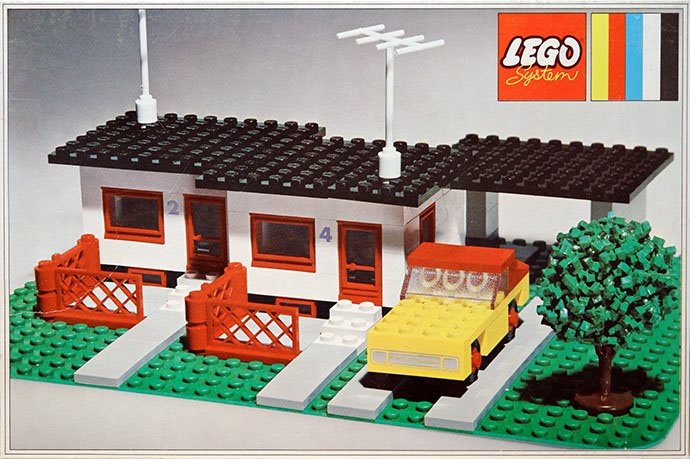
LEGO 353 set 'Terrace-House'
I spent my childhood years with LEGO. I especially remember the space LEGO, and how I took these sets apart to make even better and bigger spaceships.
But this hobby soon came into the dark ages so to speak. After many years (30 I think) I bought myself the Star Wars AT-AT. And immediately I was back in that building fun and started buying multiple sets. But when I searched for pictures of LEGO on the internet, I saw that people made the most beautiful things, and I cautiously started building my own MOCs. It took a few years before I had enough LEGO, and especially the knowledge of the pieces to be able to do what I'm making now.
View fullsize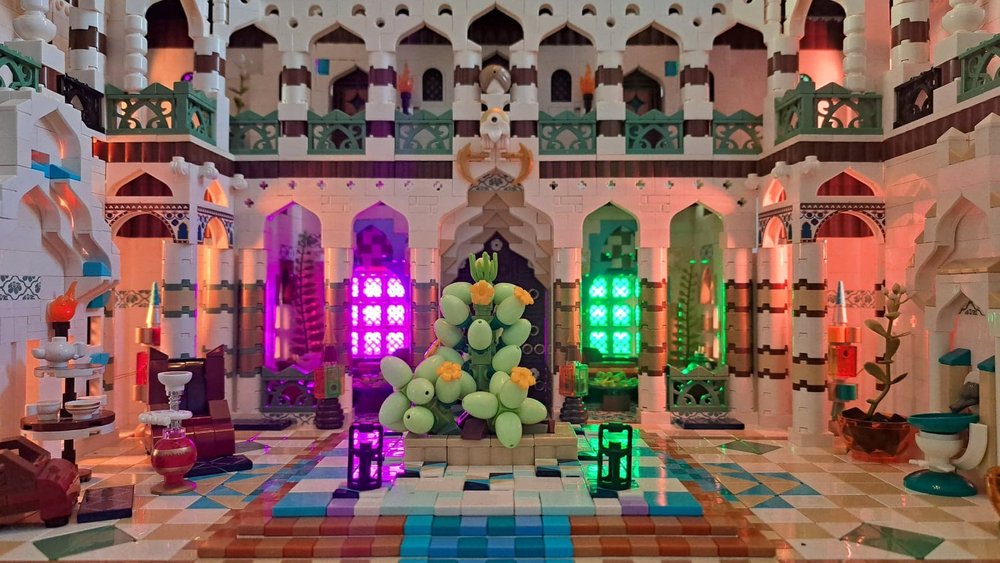
'The Riad' View fullsize

'The Riad'
Atmosphere
Ann: Your MOCs have a unique artistic style: realistic atmosphere and richness of eye-catching details! What do you love most about LEGO building? What building themes are your favorite?
Victor: That’s a very good question that I had to think about for a while. What I think I especially want is to create a good atmosphere, where you want to be, and where you want to look around. And the funny thing is that our human brains naturally discover some kind of story in it through the little details I try to make. For example, if I build a room, I hope people will ask questions like ‘Who owns this?’ or ‘What is he or she doing in life?’ I often try to portray something of a rich life preceded by a lot of history. By adding all the small details like furniture, paintings or other artifacts, one can imagine more and more.
I have a funny example to tell: when I showed some pictures of my Museum of Natural History to my students at school, one of them replied, “Oh Professor, have you been to this museum?” Well, you cannot get a better response to your build.
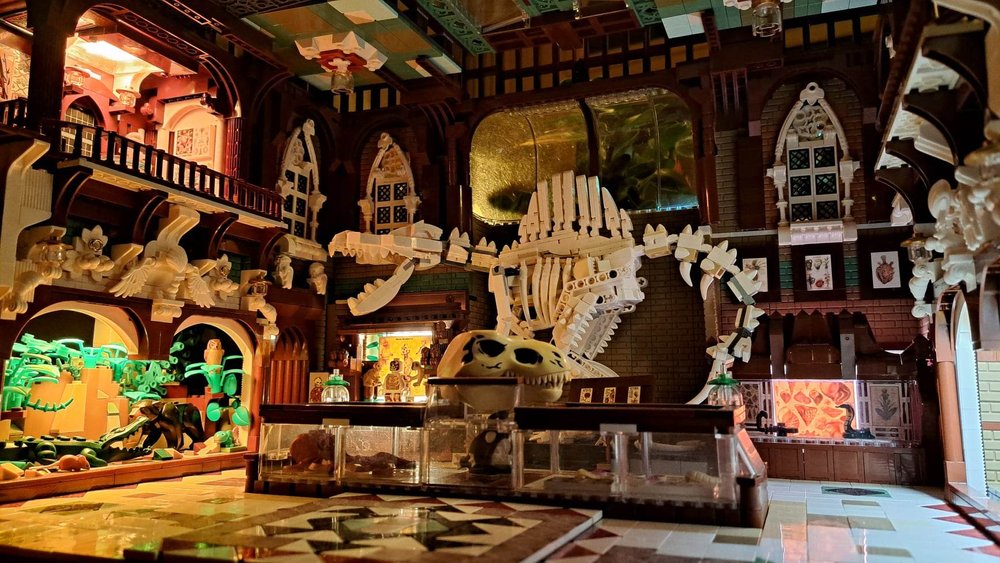
On Location
Ann: Do you like to build real-life locations? What kind of a location has a chance to be built by you?
Victor: I prefer to build the interior of rooms in which you suspect that you are allowed to look around in a large castle or country house with many small realistic details of everyday life that everyone recognizes. The challenge lies mainly in the latter: to make something very recognizable with few pieces in the mini format that has never been done before.
I think this appeals to a lot of people including myself; there is a reason behind the fact there are so many TV shows that attract a large audience with home renovation shows. We humans like to decorate! And we like to snoop around in other homes than our own, haha.
View fullsize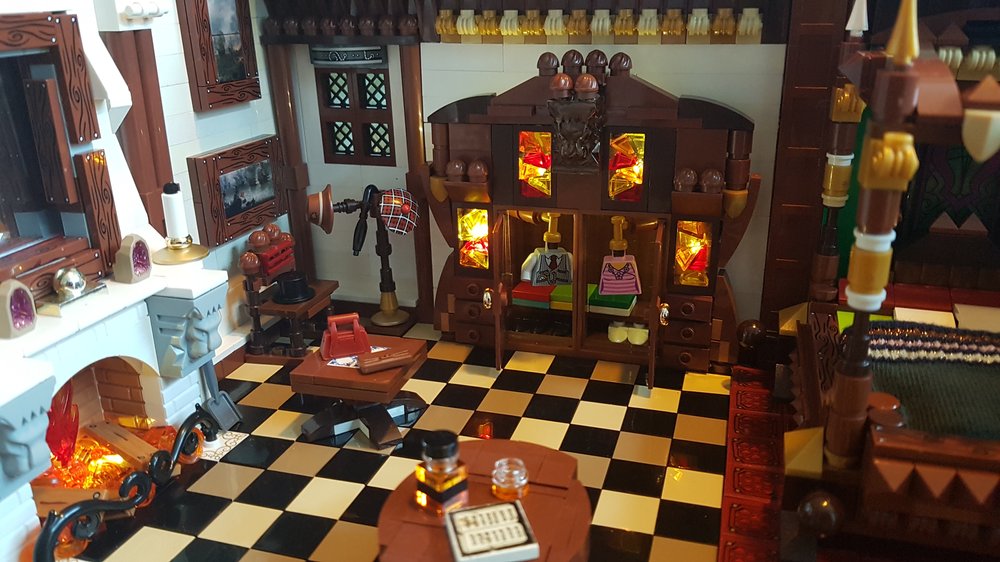
'Castle Bedroom' View fullsize
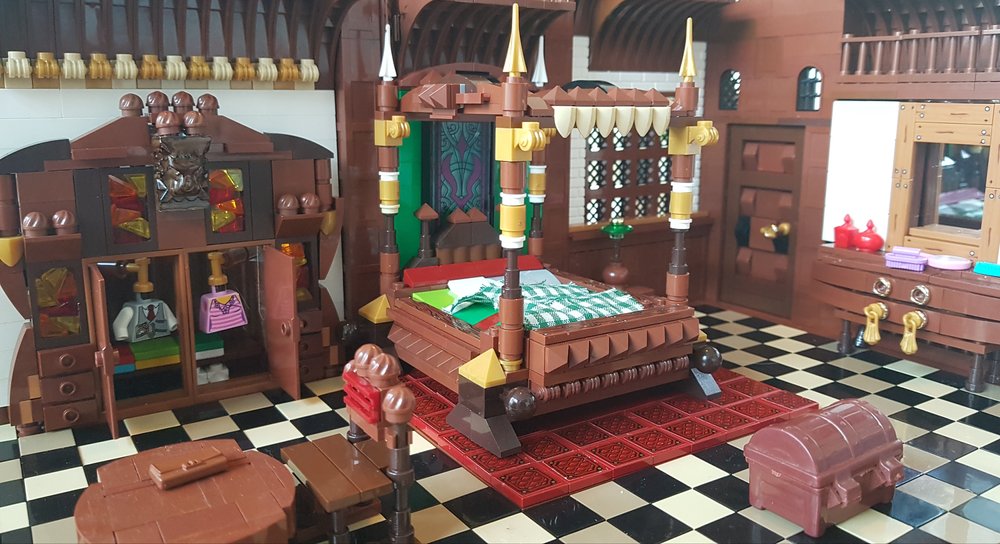
'Castle Bedroom'
Ann: Does size matter in what you choose?
Victor: Psychological research has shown that we are attracted to small objects that we quickly find cute. It turns out that a substance is released in our brain called Oxytocin (also called the love hormone) when we see these cute little things. It generates positive emotions and happiness, the same as it does for small children or little animals.
LEGO is perfect for making these little objects that we see every day and our brain understands that there is something unique about it because of its miniature nature and interprets it as cute; something we should care about. All these things and my love for old houses make me like to create a kind of small world entirely at your command. Making these dream rooms or places may also be an expression of something that you cannot build or achieve in normal life.
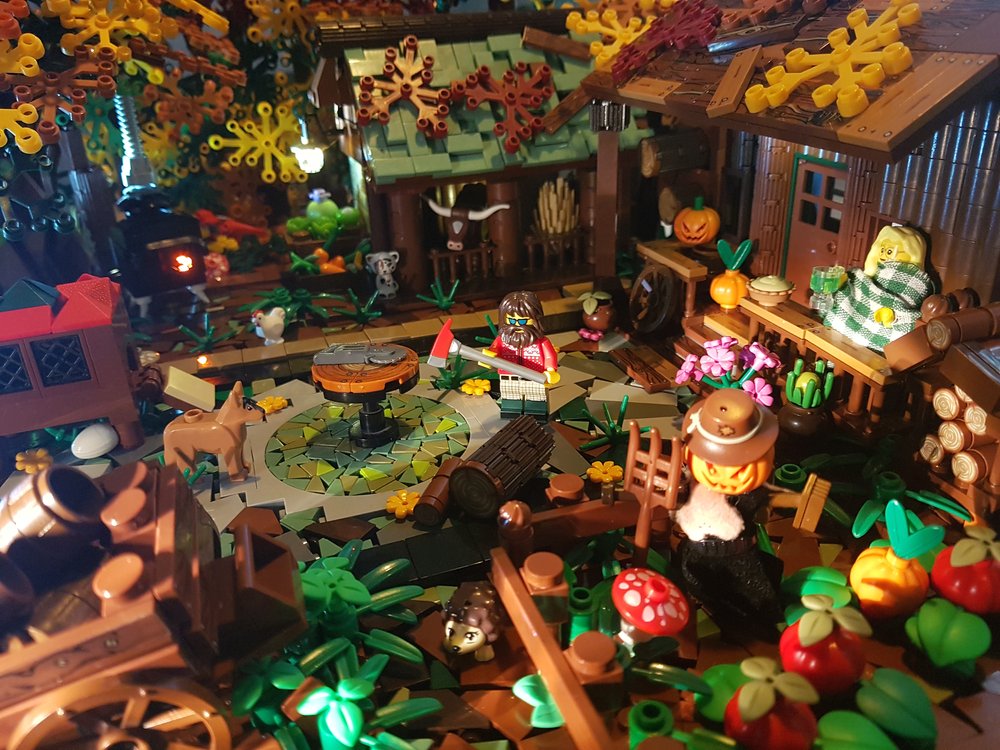
'Cabin in the woods'
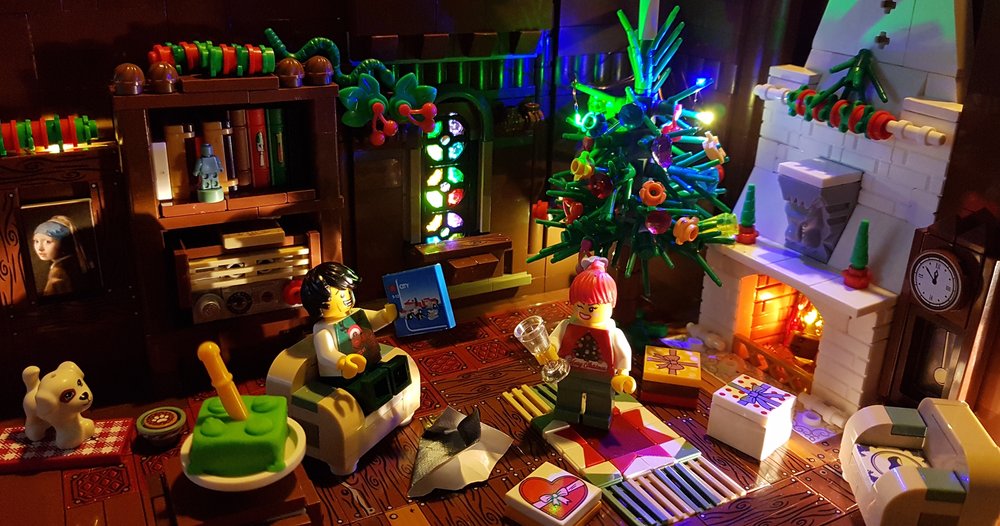
'Christmas surprises'
Night at the Museum
Ann: Your Museum of Natural History is amazing! It seems that the spectator can actually take a virtual tour, admiring all these exhibit items. Did you invent everything yourself, or were you inspired by some real-life Natural History museums? The level of its authenticity is very intriguing!
Victor: Thank you for your compliments! My working method is often to search the internet for pictures of old interiors or real-life places. There are also plenty of old buildings or museums in the Netherlands where the old grandeur has been preserved. So before building the museum, I did a lot of research, so to speak. Also in other places around Europe, I did find some examples of what I had in mind to build.
View fullsize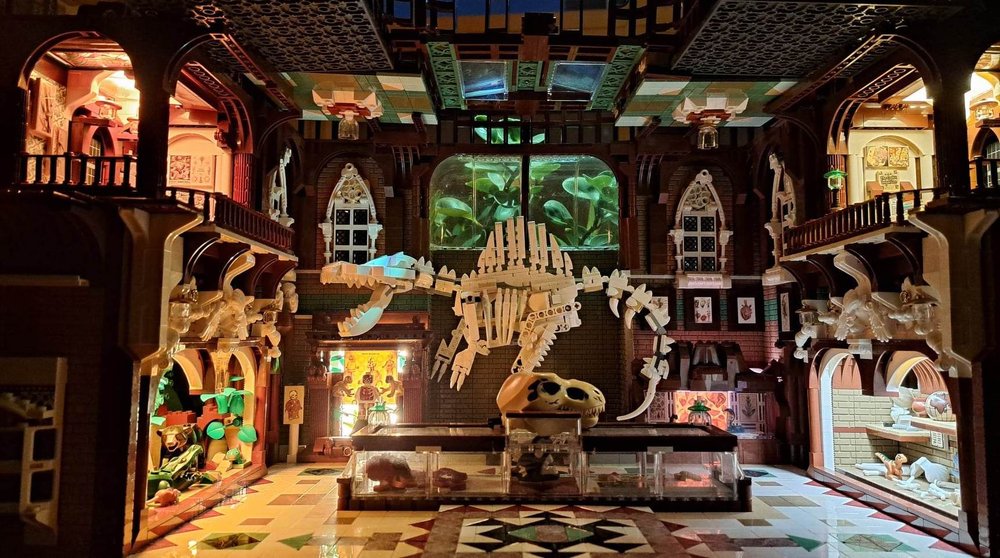
View fullsize
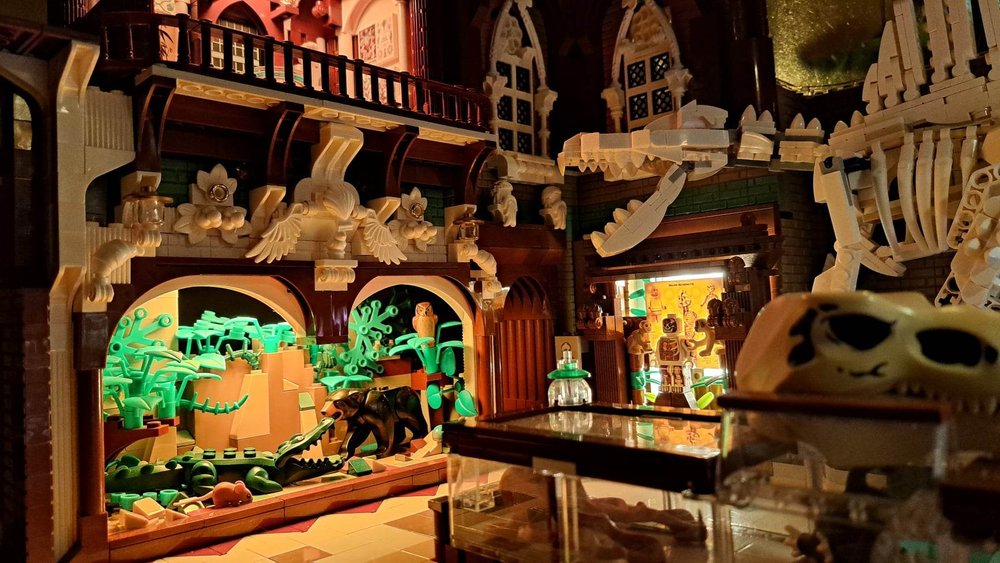
So I had some ideas to work with, but mostly I usually don't have a preconceived plan. Building happens automatically, and gradually it changes or takes shape. It helps enormously to have a lot of knowledge of LEGO pieces to be able to make ornaments or other architectural details, for example, and often it is just a few pictures that I use as a reference, and it kind of forms itself.
View fullsize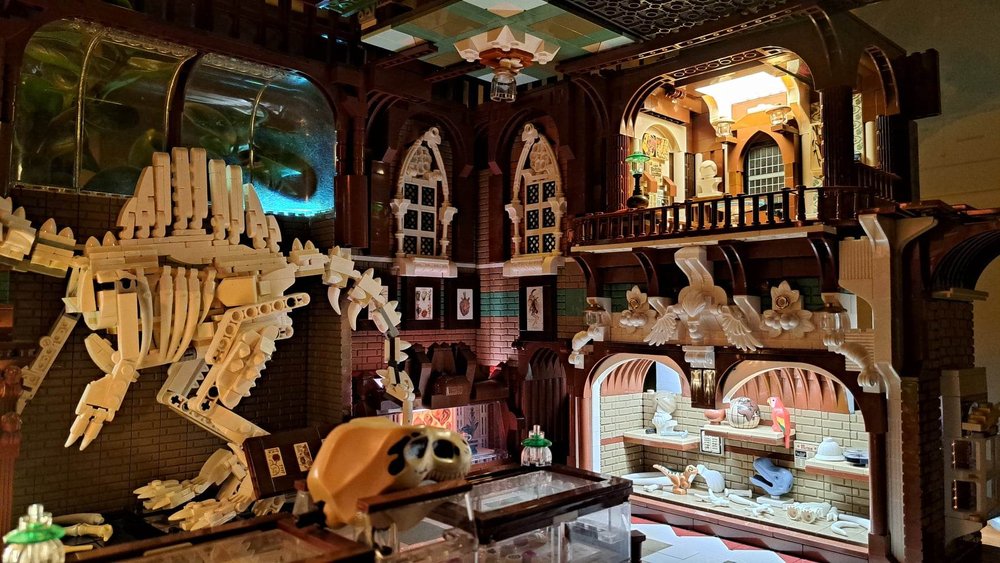
View fullsize
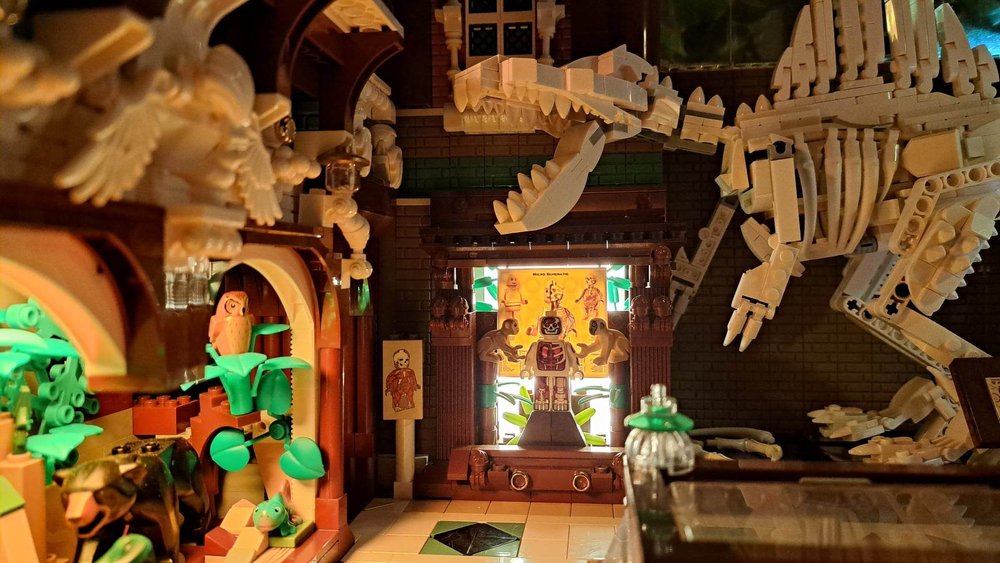
Again, I wanted to make a place where you would actually want to look around. During construction, I also checked a lot how the light could be used to give it more atmosphere, and how it looks in the photo. Sometimes I had to adjust things because it just doesn't come across well on the photo.
Also funny to mention when I started to build, I said to my wife that I was planning to make something small… but I usually do and then after a few days there’s no room at all at our dining table where I prefer to work on my builds. So this happened again. She’s used to this now.
Inspiration
Ann: Do you build locations from cinema or other media/cultural areas?
Victor: I often look for pictures or photos on the internet or indeed from films. Sometimes it's about the atmosphere. But because I never know how the structure can turn out, it is often still difficult to retain some of the original atmosphere or idea and that is something you have to constantly monitor.
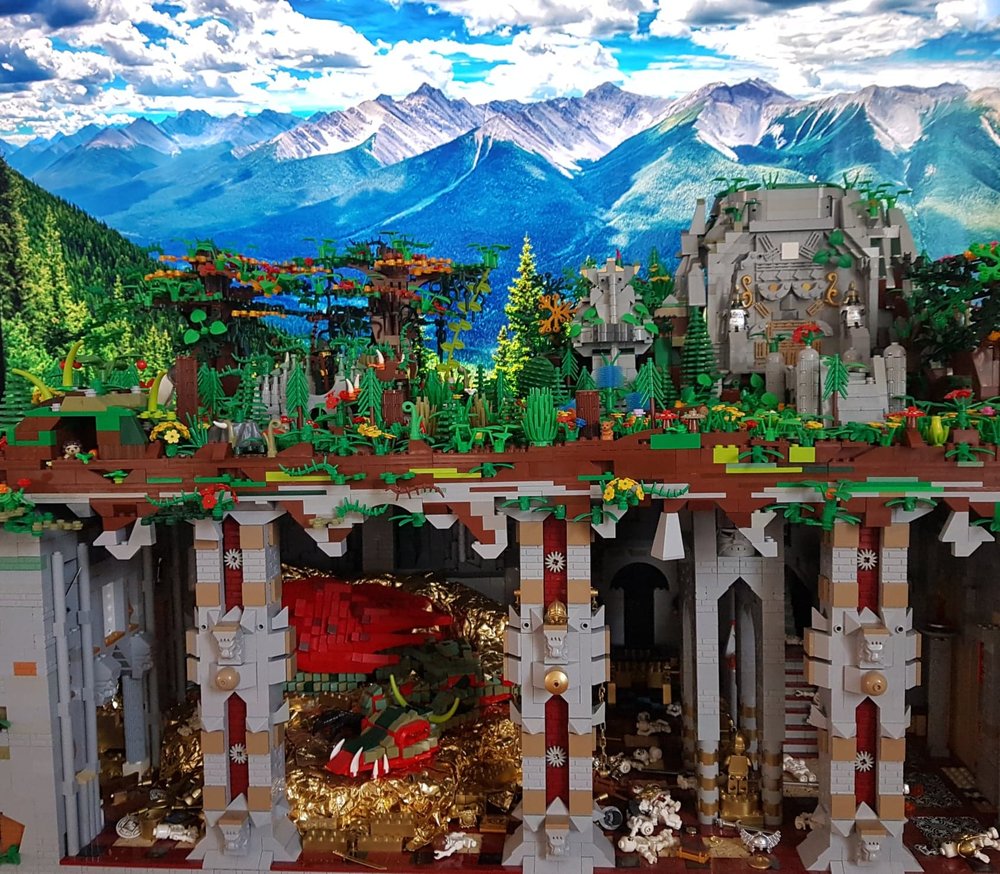
' Dragon under the mountain'
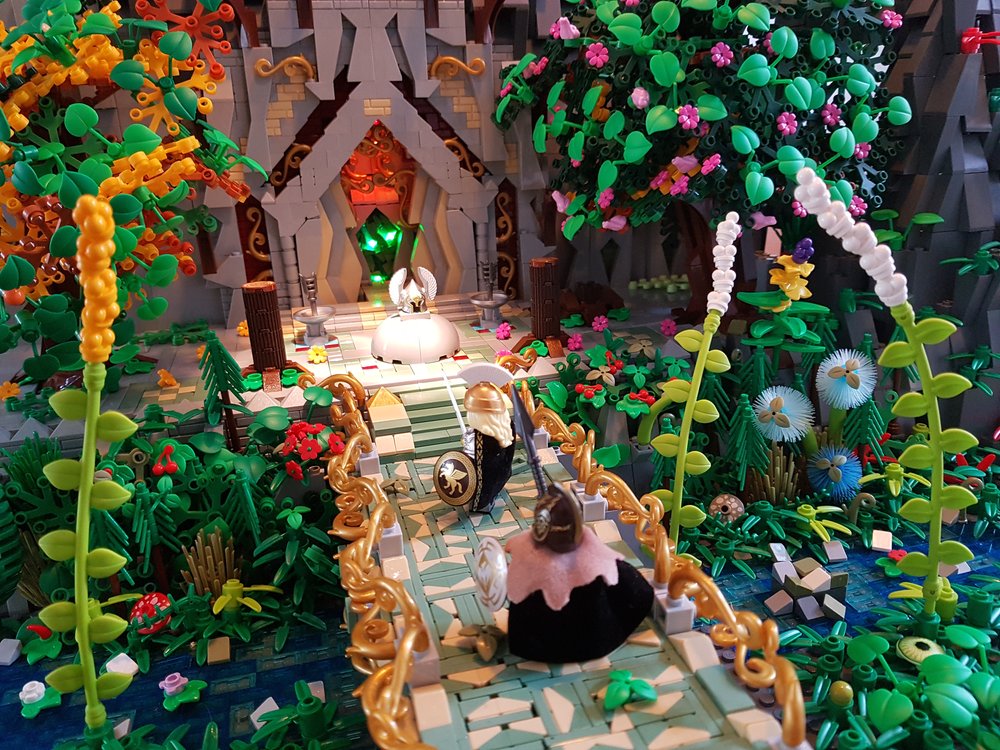
' Entering the long lost hall of the elven king'
How To Tell A Story
Ann: Your creations not only please the eye but also have the feeling of motion: the scenes with LEGO minifigures in your 'Japanese MOC' are perfectly dynamic. All characters have their mini-stories, don't they?
Victor: Well I wanted to make a little build with the Japanese Geisha minifigure, and I thought it would be funny if she had a husband who was always busy with training. But as it always turns out, it got bigger and bigger because I wanted to put more Japanese buildings and stuff in it. So I had to put more minifigs in. And here we go again. Our brains do see a little story in this.





Tool Time!
Ann: Your 'Workshop' looks like a big jewel box full of well-thought-out details. Even the empty room tells much about its owner who's "out of a frame". Are you concentrating on the owner's personality when you create a new location?
Victor: Very good question! The Workshop is perhaps the best example of how I would like to see my own workshop. But actually, there were too many ideas to get into it. Maybe there will be a sequel, haha.
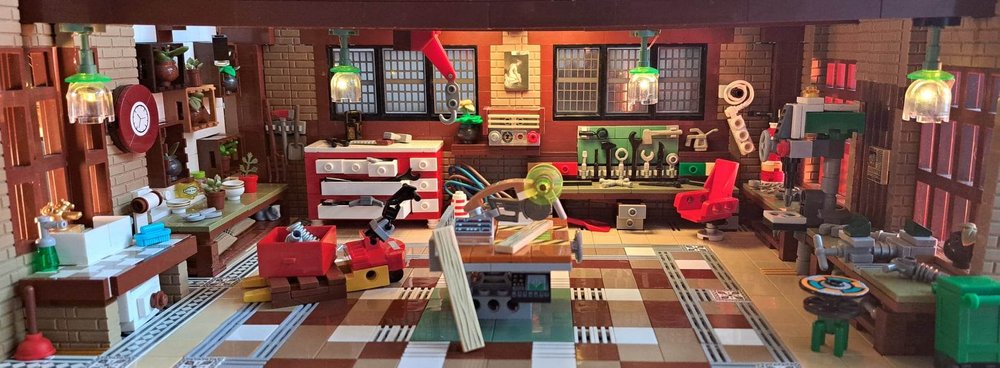


But when the workshop was built, the kind of image of the person who owned it began to emerge. At least a person who is much more handy than myself, haha. The funny thing was that after I started posting the structure all over social media, I got a lot of comments from people saying that they recognized someone like their father who had a workshop that looked a lot like this. In fact, you can't get better compliments. It turned out that I had something in terms of atmosphere and appearance that many people recognized and I had done my research well.
Something Smells Good!
Ann: The 'Old Dutch Kitchen' is a great example of national beauty. What building aspects do you use to illustrate the national identity in your creations (colors, special style, national attributes)?
Victor: Thank you again! The kitchen was very difficult in terms of looking for examples. Many preserved old kitchens are no longer in their original state and people have made a kind of interpretation of how it should be. I didn't care which country this kitchen came from, but soon you end up in Europe where of course are many old buildings.
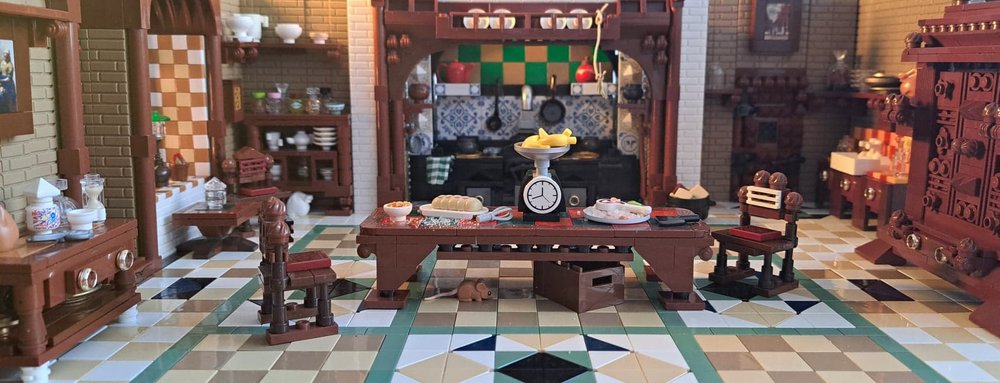 View fullsize
View fullsize
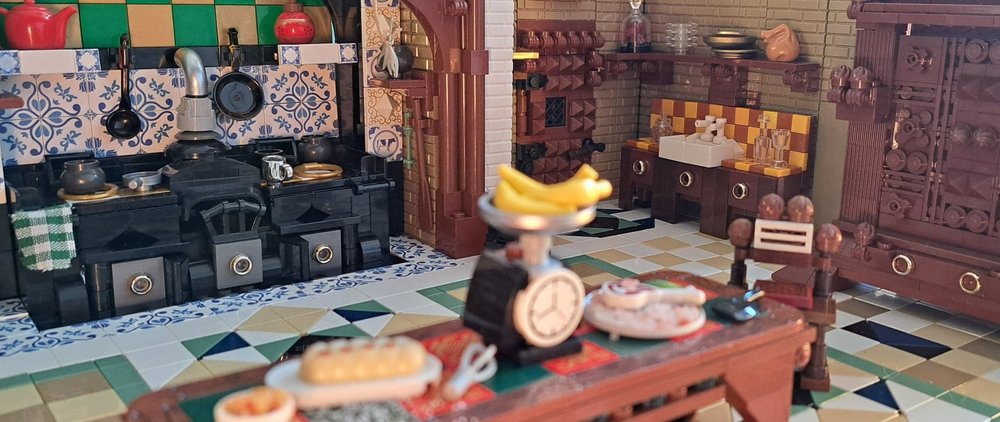
View fullsize

I had some pictures in my head about what it should look like, but gradually it became clear that most of these kitchens were in the Netherlands. Given the rich history of our VOC and the wealth of 17th century buildings, you end up in the Netherlands in terms of examples. So it became an old Dutch kitchen.
View fullsize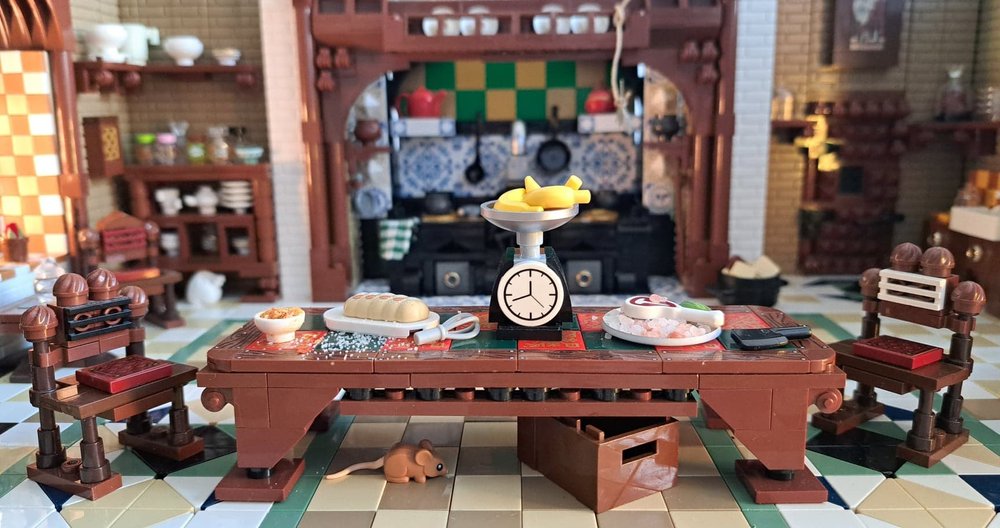
View fullsize
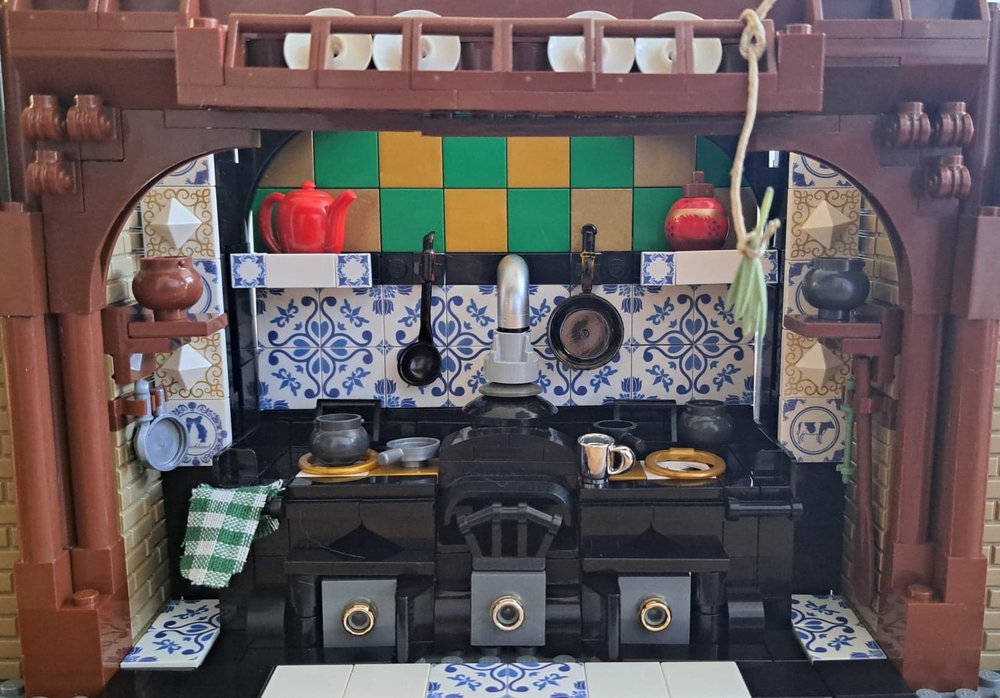
I also started looking for old paintings and pictures in old books. What did an old wood stove look like? How were tiles used? Where did people place things and all sorts of other details that I had to look for first.
For example, the wood stove is in a kind of alcove with a round arch. The deep window is finished with tiles. Plates are above the wood stove in a wooden frame. All things and details that I collected to maintain that atmosphere. So yes, I do pay attention to colors and styles that I can find in real life and I do hope they represent something like a national identity.
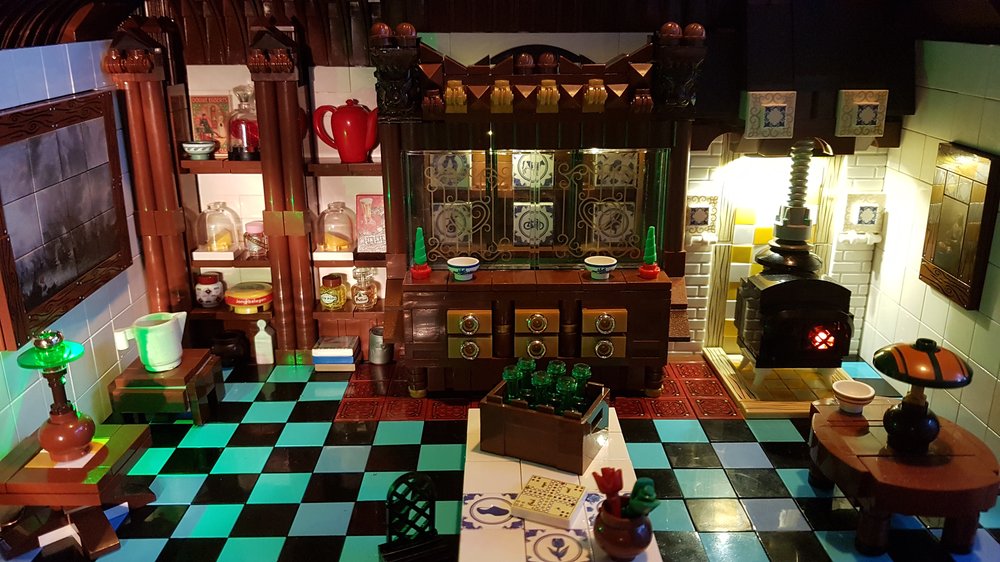
Challenges: Past and Future
Ann: Would you like to tell about your favorite LEGO MOCs?
Victor: I don't really have favorites because everything I could build was a pleasure to do. But my Italian Square was a kind of victory for myself because I had no real experience in building the exteriors of houses.
View fullsize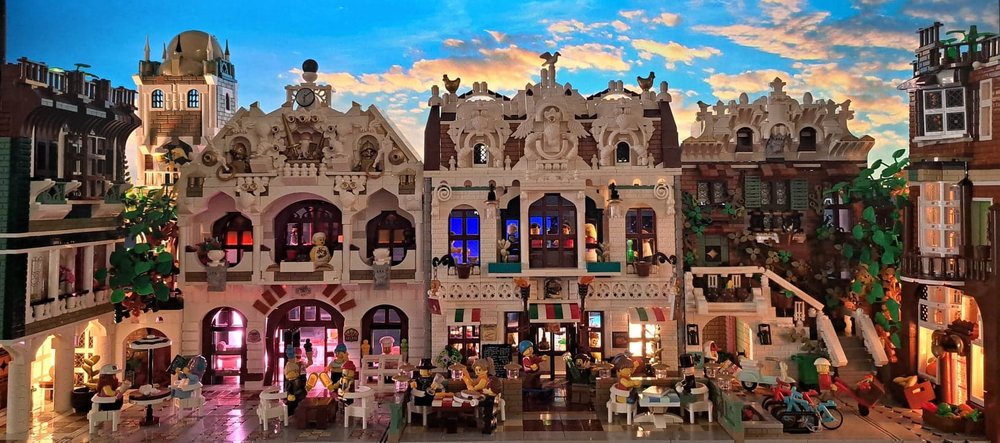
View fullsize
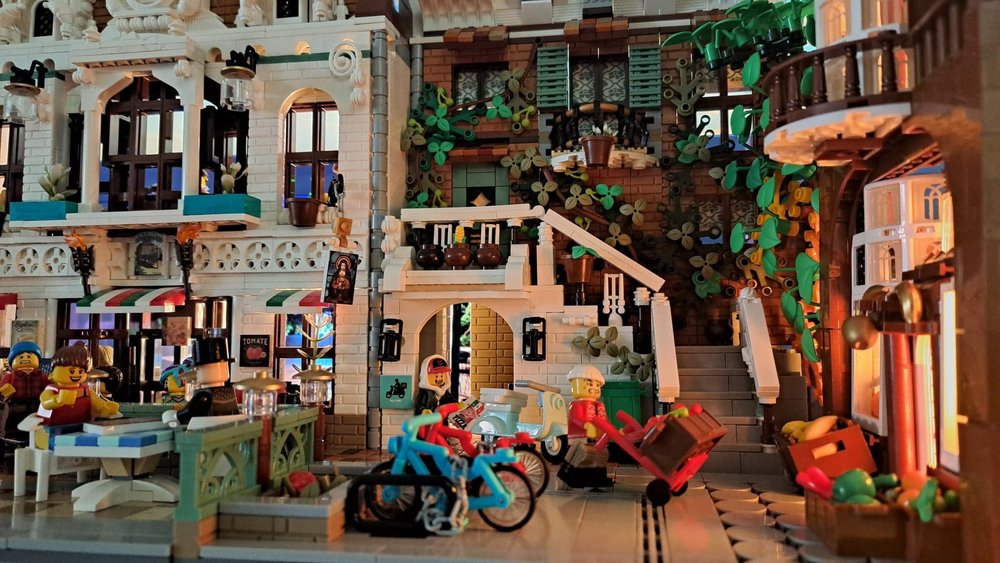
I also wanted to make these houses with beautiful ornaments and roofs, but had never done this before. So I had to use all kinds of new techniques and that was a lot of inventing and testing. The structure now has almost 40,000 views on Flickr and I am very proud of that!
View fullsize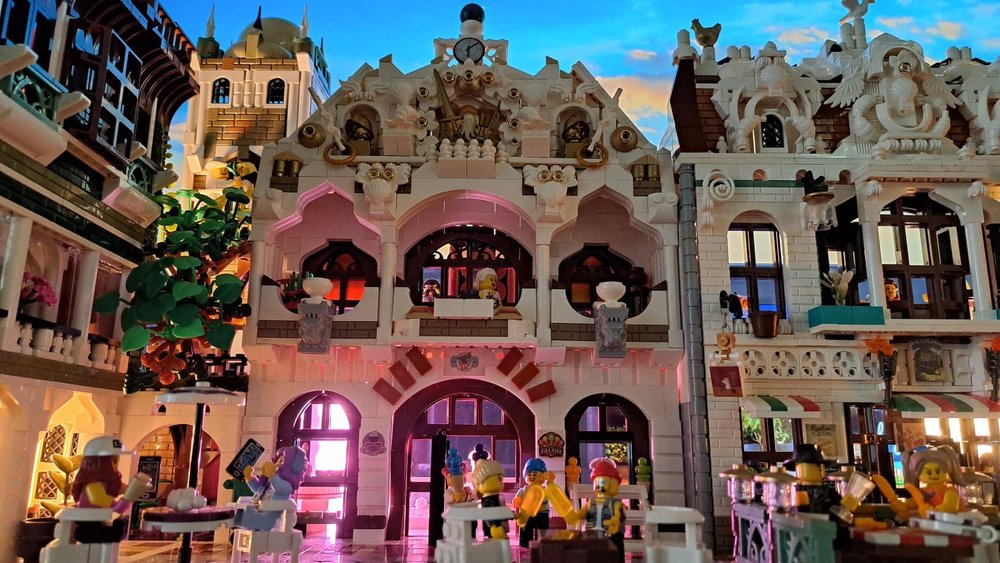
View fullsize
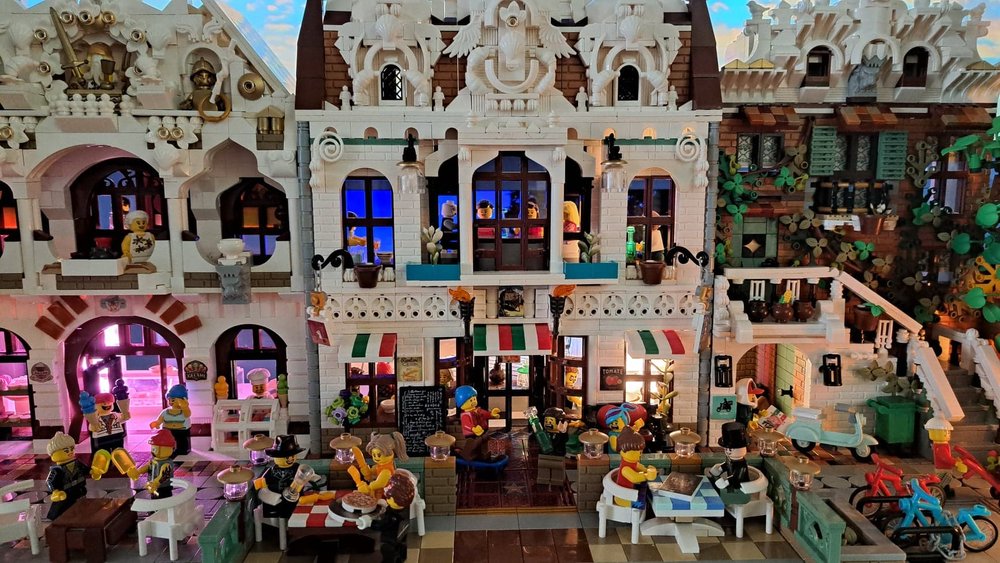
With every new MOC I try new techniques and things that I have not seen before in LEGO form. That's how I learn every time. It's always amazing to discover again how you can vary endlessly with LEGO in how it can look and the functionalities you can discover that you would never come up with if you didn't challenge yourself.
Official Sets vs MOCS
Ann: What are your favorite themes of official LEGO sets?
Victor: A few years ago I stopped buying LEGO sets because if I want to build something I will do it myself. But I try to keep myself informed about new sets that are released. My favorites are always things from Lord of the Rings, and I would like to buy and build the new set from Rivendell. This set looks great, and I'm curious about some of the techniques.
The limited BrickLink sets are also often interesting from what I see. Of course, I hope for new releases of LEGO sets because of the new pieces that are interesting for my own builds. ;)
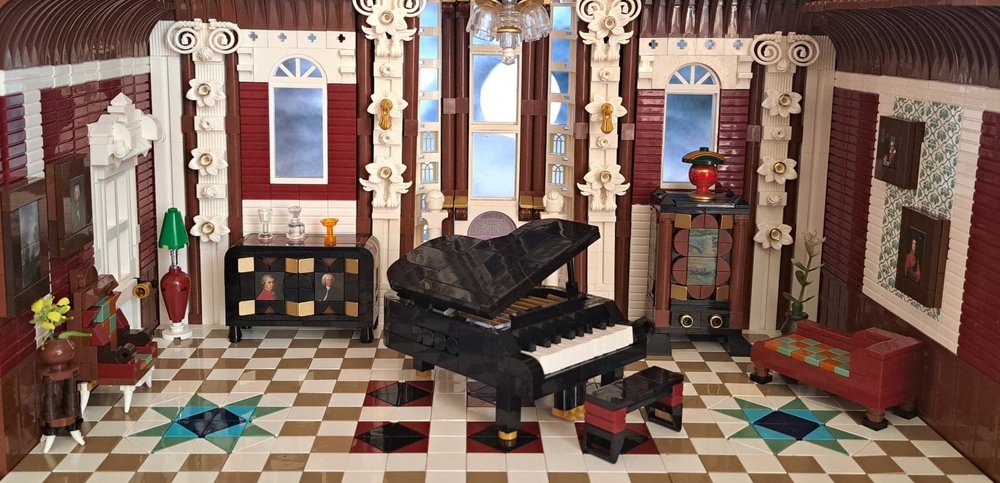
'Moonlight Sonata'
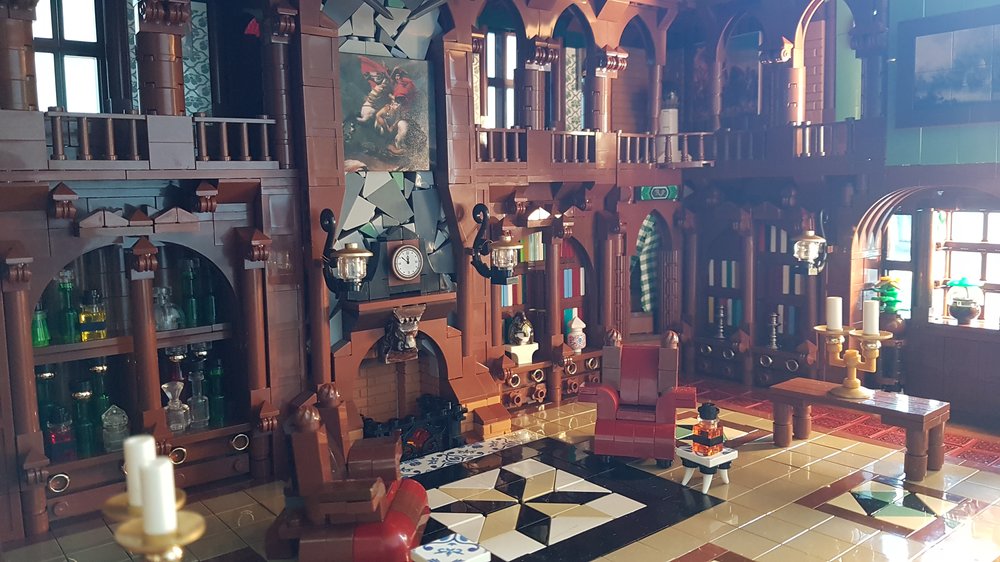
'The antechamber of Brickelton Manor'
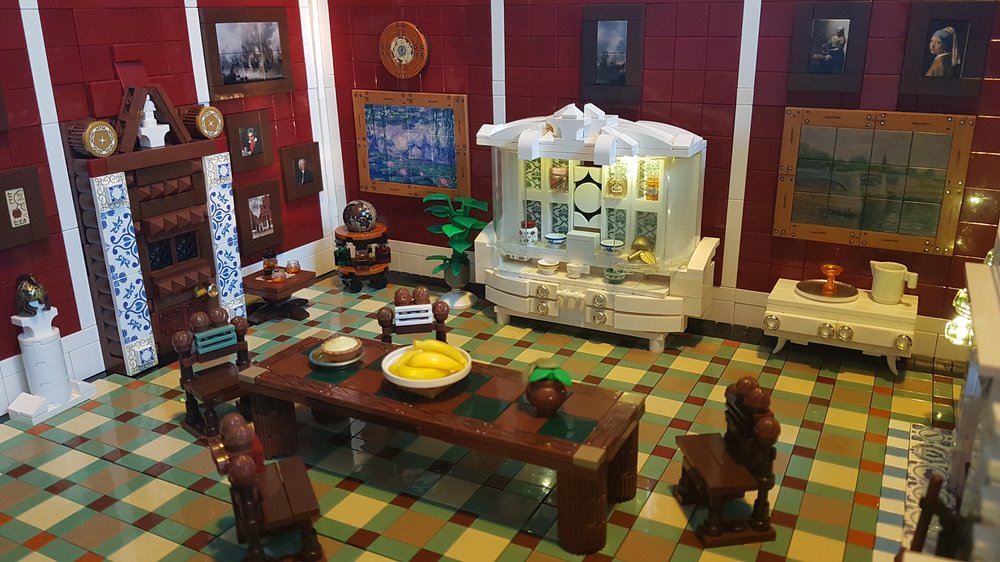
'Red room dining'
… And Beyond
Ann: Would you like to tell us about any other hobbies and interests outside of LEGO?
Victor: Through reading and traveling and a love for films that I also made myself, I think it becomes easy to think in images a lot. This way you keep thinking creatively, which of course helps a lot when inventing and building LEGO constructions. So this combination is fantastic: spending a lot of time in other worlds and then translating them.
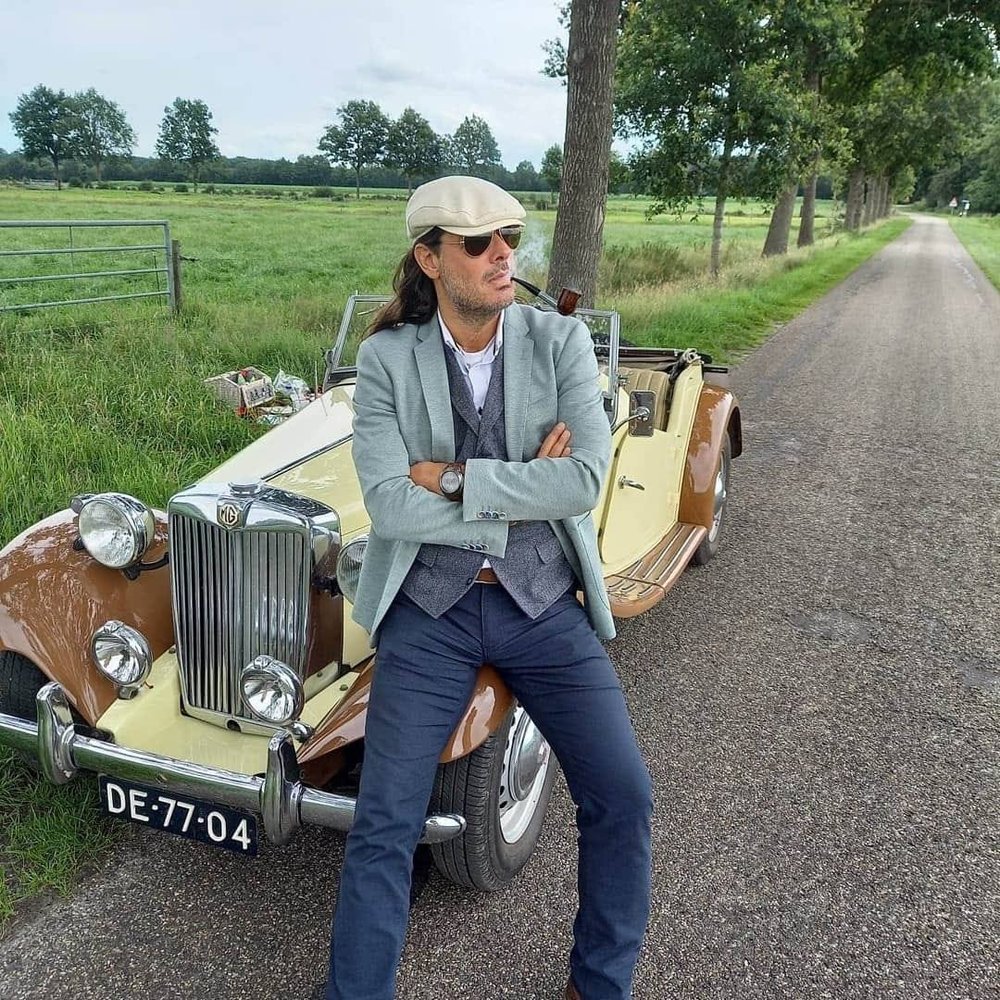
Ann: Huge thanks for the great conversation, Victor! It was a pleasure chatting with such a passionate LEGO builder. I wish you much inspiration for your wonderful creations!
What realistic building interiors have you made from LEGO? Let us know in the comments below.
Do you want to help BrickNerd continue publishing articles like this one? Become a top patron like Charlie Stephens, Marc & Liz Puleo, Paige Mueller, Rob Klingberg from Brickstuff, John & Joshua Hanlon from Beyond the Brick, Megan Lum, Andy Price, John A. and Lukas Kurth from StoneWars to show your support, get early access, exclusive swag and more.

